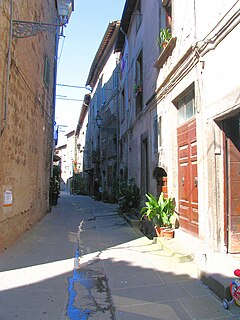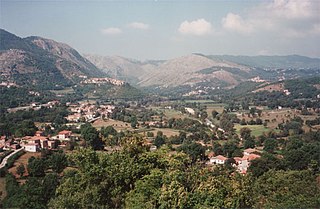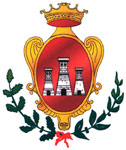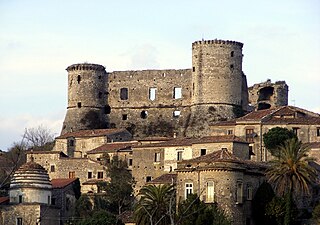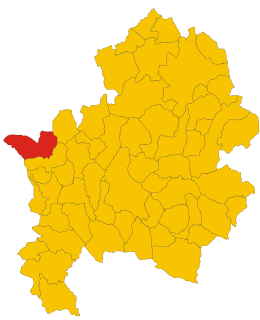This article needs additional citations for verification .(October 2010) (Learn how and when to remove this template message) |
| San Pietro Infine | |
|---|---|
| Comune | |
| Comune di San Pietro Infine | |
 | |
| Coordinates: 41°27′N13°58′E / 41.450°N 13.967°E Coordinates: 41°27′N13°58′E / 41.450°N 13.967°E | |
| Country | Italy |
| Region | Campania |
| Province | Caserta (CE) |
| Government | |
| • Mayor | Mariano Fuoco |
| Elevation | 140 m (460 ft) |
| Population (31 December 2010) [1] | |
| • Total | 988 |
| Demonym(s) | Sanpietresi |
| Time zone | CET (UTC+1) |
| • Summer (DST) | CEST (UTC+2) |
| Postal code | 81050 |
| Dialing code | 0823 |
| Website | Official website |
San Pietro Infine is a comune (municipality) in the Province of Caserta in the Italian region Campania, located about 70 kilometres (43 mi) northwest of Naples and about 50 kilometres (31 mi) northwest of Caserta. San Pietro Infine borders the following municipalities: Mignano Monte Lungo, San Vittore del Lazio, Venafro.

The comune is a basic administrative division in Italy, roughly equivalent to a township or municipality.

The Province of Caserta is a province in the Campania region of Italy. Its capital is the city of Caserta, situated about 36 kilometres (22 mi) by road north of Naples. The province has an area of 2,651.35 square kilometres (1,023.69 sq mi), and a total population of 924,414 as of 2016. The Palace of Caserta is located near to the city, a former royal residence which was constructed for the Bourbon kings of Naples. It was the largest palace and one of the largest buildings erected in Europe during the 18th century. In 1997, the palace was designated a UNESCO World Heritage Site.

Italy, officially the Italian Republic, is a country in Europe. Located in the middle of the Mediterranean Sea, Italy shares open land borders with France, Switzerland, Austria, Slovenia and the enclaved microstates San Marino and Vatican City. Italy covers an area of 301,340 km2 (116,350 sq mi) and has a largely temperate seasonal and Mediterranean climate. With around 61 million inhabitants, it is the fourth-most populous EU member state and the most populous country in Southern Europe.






